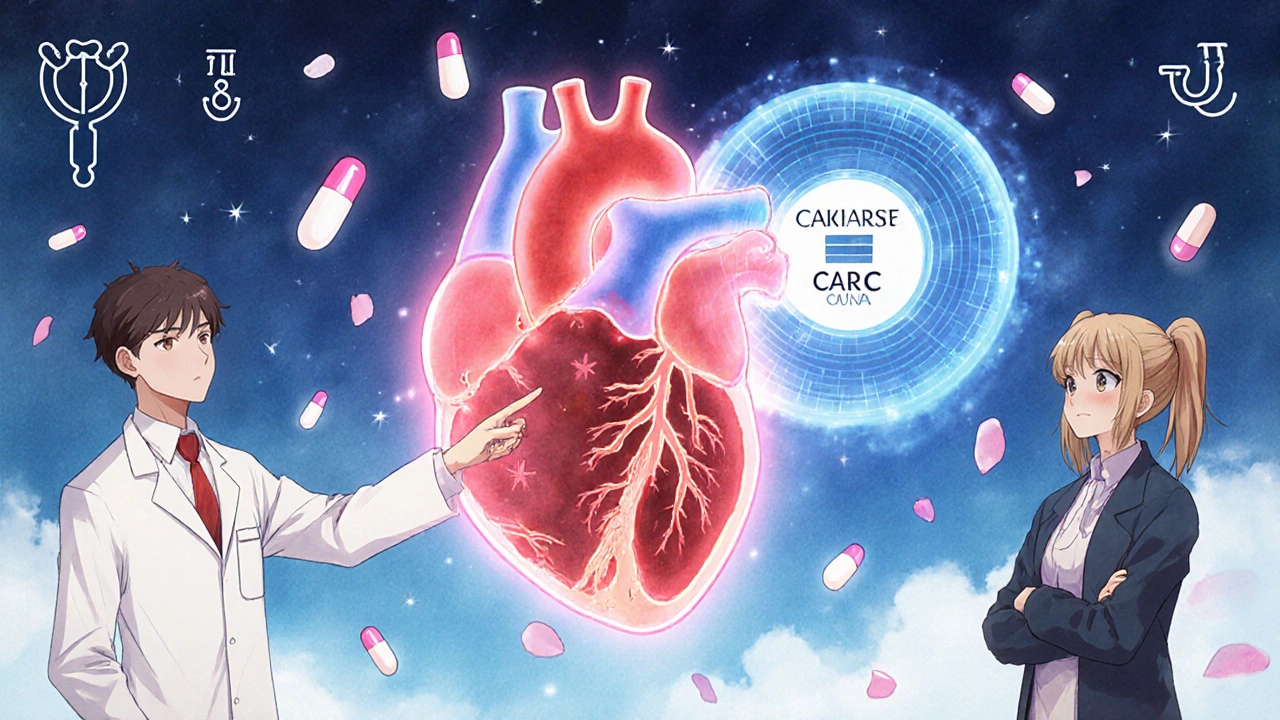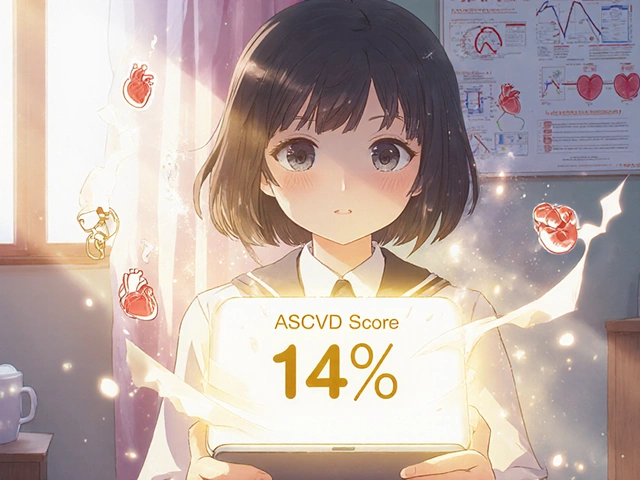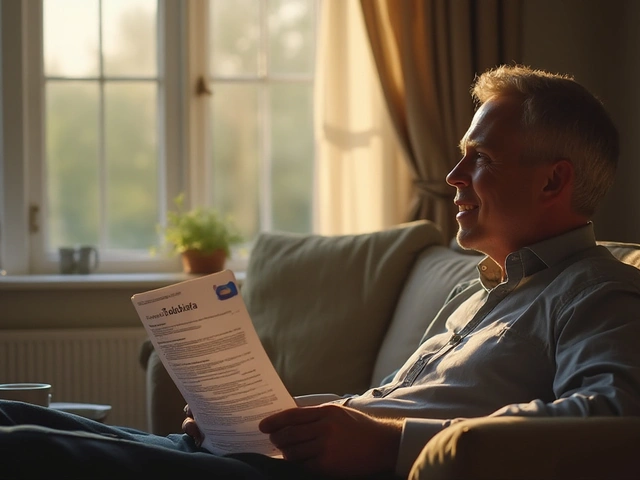When it comes to preventing heart attacks and strokes, guessing isn’t good enough. That’s why doctors now use something called the ASCVD score-a number that tells you your real risk of having a major heart event in the next 10 years. It’s not a crystal ball. It’s a tool, built from decades of research, that turns your blood pressure, cholesterol, and lifestyle habits into a clear percentage. And for millions of Americans between 40 and 79, that number decides whether they start a statin, change their diet, or just keep monitoring.
What Exactly Is the ASCVD Score?
The ASCVD Risk Estimator was created by the American College of Cardiology and the American Heart Association in 2013, with an update in 2018. It’s based on data from over 500,000 people tracked for decades across four major studies: Framingham, Atherosclerosis Risk in Communities, Cardiovascular Health Study, and CARDIA. These aren’t small surveys-they’re long-term, real-world tracking of heart health outcomes.
The calculator uses nine inputs: your age, sex, race, total cholesterol, HDL cholesterol, systolic blood pressure, whether you’re on blood pressure meds, if you have diabetes, and if you smoke. It doesn’t ask about weight, waist size, or stress levels. It’s focused. And it gives you two numbers: your 10-year risk and your lifetime risk.
Risk levels are broken down simply:
- Low: under 5%
- Borderline: 5% to 7.4%
- Intermediate: 7.5% to 19.9%
- High: 20% or higher
If your 10-year risk hits 7.5% or more, guidelines say you should start talking about statins. At 20% or higher, high-intensity statins are usually recommended. But here’s the catch-the score isn’t a prescription. It’s a conversation starter.
Why the ASCVD Score Isn’t Perfect
It’s easy to think a number like this is exact. But it’s not. The original data used to build the calculator came mostly from White and Black populations. That means it doesn’t work as well for everyone.
For American Indians, South Asian Americans, and Puerto Ricans, the ASCVD score often underestimates risk by 15% to 25%. That’s dangerous. Someone with a 6% score might actually be at 12% risk-and miss out on life-saving treatment. Meanwhile, for East Asian Americans and Mexican Americans, the tool can overestimate risk by 10% to 20%. That could lead to unnecessary meds or anxiety.
And it ignores key players like lipoprotein(a)-a genetic cholesterol particle that can double your heart attack risk. Or coronary artery calcium (CAC), a direct measure of plaque in your arteries. A CAC score of zero means your risk is far lower than the ASCVD score suggests. A score over 100? That’s a red flag, even if your ASCVD score is only 12%.
Doctors in Pittsburgh, Chicago, and Atlanta know this. That’s why many now order a CAC scan for patients stuck in the intermediate-risk zone. The EISNER study found that when CAC results are added, treatment decisions change in 68% of those cases. One patient might go from “maybe start a statin” to “definitely need one.” Another might go from “you’re borderline” to “you’re actually low risk”-and avoid side effects from unnecessary pills.
What About Other Risk Tools?
The ASCVD calculator isn’t the only game in town. The Framingham Risk Score was the gold standard for years, but it’s now outdated. Even the Framingham Heart Study team says to use the ASCVD tool instead.
The Reynolds Risk Score adds two extra factors: high-sensitivity CRP (a marker of inflammation) and whether a parent had a heart attack before age 60. It’s more accurate for people without diabetes, and it helps reclassify risk better than ASCVD alone-especially in intermediate-risk patients.
Then there’s the MESA Risk Score. It uses CAC scores to give you a “coronary age.” For example, a 55-year-old with heavy plaque buildup might have a coronary age of 78. That’s not a metaphor-it’s a measurable signal that your arteries are aging faster than your body.
And now, the American Heart Association’s PREVENT Online Calculator (launched in 2023) goes further. It adds social factors: neighborhood safety, access to healthy food, income level. Why? Because living in a food desert or a high-crime area increases your heart disease risk by 23%, independent of cholesterol or blood pressure. This isn’t science fiction-it’s data from a 2021 Circulation study.

How Doctors Actually Use the ASCVD Score
In real clinics, the score is rarely used alone. Here’s how it usually plays out:
- A patient comes in for a checkup. Their blood pressure is 140/88, total cholesterol is 210, HDL is 42, they smoke, and they’re 58.
- The EHR system auto-calculates their ASCVD score: 14%. Intermediate risk.
- The doctor doesn’t say, “You need a statin.” Instead, they say, “Your risk is higher than most people your age. Let’s talk about what that means.”
- They ask: “Do you want to avoid a heart attack? What’s your biggest concern-meds, side effects, cost, or lifestyle?”
- If the patient is unsure, they order a CAC scan. If the score is zero, they delay statins and focus on quitting smoking and walking 30 minutes a day.
- If the CAC score is 300, they start a moderate-intensity statin and refer them to a dietitian.
That’s the difference between using a calculator and using judgment. The score tells you where to look. It doesn’t tell you what to do.
Why So Many People Miss the Mark
Even with this tool, heart disease prevention is still failing. Only 58% of high-risk patients get the statins they should. Why?
One big reason: patients don’t know their own numbers. A 2017 study found that 22% of people misreport their smoking status. Another 31% of primary care doctors misclassify intermediate risk as low risk. And blood pressure readings? If the cuff is too small or the patient just walked in, the number can be off by 10 mm Hg-enough to push someone from 6% to 9% risk.
Another issue: people think if they feel fine, they’re fine. But most heart attacks happen to people with no symptoms. The ASCVD score catches those people before it’s too late.
And then there’s the lifetime risk. For someone under 55 with a 7% 10-year risk, their lifetime risk might be 45%. That’s more than half. That’s why guidelines now say: if you’re young and intermediate risk, don’t just look at the next 10 years. Look at the next 40.
What’s Next for Heart Risk Tools?
The future of risk calculation is getting smarter. The ACC is testing a new algorithm using machine learning and more diverse data. Early results show a 18% improvement in predicting risk for South Asian Americans.
And then there’s genetics. The UK Biobank study showed that adding a polygenic risk score-based on 6.6 million genetic markers-improves prediction by 14.3% in intermediate-risk patients. That means in a few years, your risk score might include your DNA.
But here’s the bottom line: no tool replaces a good conversation. The ASCVD score isn’t about labeling people. It’s about giving doctors and patients a shared language. A number. A starting point. A reason to act before the next chest pain hits.
What Should You Do?
If you’re between 40 and 79:
- Ask your doctor for your ASCVD score. Don’t wait for them to bring it up.
- If you’re in the intermediate range (7.5-19.9%), ask about a CAC scan. It’s a simple, low-dose CT scan that takes less than 10 minutes.
- If you’re under 55, ask about your lifetime risk-not just the next 10 years.
- If you smoke, quit. It’s the single biggest thing you can do to lower your score.
- If you’re borderline or intermediate, don’t assume you’re fine. Small changes-walking daily, cutting sugar, getting enough sleep-can drop your risk by 20-30% over time.
Heart disease doesn’t come out of nowhere. It builds slowly. The ASCVD score helps you see it before it’s too late. Use it. Don’t fear it. And never let it be the only thing your doctor talks about.
What is a normal ASCVD score?
There’s no single "normal" ASCVD score. It’s about risk categories: under 5% is low, 5-7.4% is borderline, 7.5-19.9% is intermediate, and 20% or higher is high. A score below 5% means your risk is lower than average for your age group. But even a low score doesn’t mean zero risk-lifestyle still matters.
Can I calculate my ASCVD score myself?
Yes. The American College of Cardiology offers a free online calculator at cardiosource.org. You’ll need your latest cholesterol numbers, blood pressure reading, and answers to questions about diabetes, smoking, and medications. But remember: self-calculated scores are just estimates. Always discuss results with a doctor before making health decisions.
Does the ASCVD score work for people under 40 or over 79?
No. The calculator is only validated for people aged 40 to 79. For younger adults, doctors focus on lifetime risk, family history, and early warning signs like high LDL or early hypertension. For those over 79, risk assessment becomes more individualized, since other health conditions and life expectancy play a bigger role than just heart risk numbers.
Why does race matter in the ASCVD score?
The original research used data from four U.S. cohorts, which included mostly White and Black participants. The equations were calibrated differently for these groups because heart disease patterns vary by ancestry. But the tool doesn’t fully capture risk for other groups like South Asians or American Indians, who may have higher risk at lower cholesterol levels. That’s why doctors now use the score as a starting point-not the final word.
If my ASCVD score is low, do I still need to worry about heart health?
Absolutely. A low score doesn’t mean you’re immune. Many people under 55 with low 10-year risk still have high lifetime risk. Lifestyle habits-diet, exercise, sleep, stress-still matter. And factors like lipoprotein(a), family history, or chronic inflammation can raise your risk even if the calculator doesn’t show it.
Can I lower my ASCVD score without medication?
Yes. Quitting smoking can drop your score by 2-5% in just one year. Losing 10 pounds, getting 150 minutes of walking a week, and reducing processed carbs can lower your LDL and blood pressure enough to drop your risk by 10-20%. Medication helps, but lifestyle is the foundation.








Andrea Johnston November 19, 2025
Okay but let’s be real-this ASCVD score is just a fancy spreadsheet that doesn’t know if you’re stressed out from working two jobs, sleeping 4 hours a night, and eating ramen because your neighborhood has zero grocery stores. It’s not magic. It’s math with blind spots. And yeah, it’s worse for people who aren’t white. That’s not a bug-it’s a feature of broken data.
My mom’s score was 6%. She’s South Asian. Her CAC scan? 412. She’s on a statin now. The calculator almost got her killed. Don’t trust numbers that don’t know your life.
Scott Macfadyen November 19, 2025
My doc ran the calculator and said I was borderline. I asked for a CAC scan. Zero. Zero! He shrugged and said, 'Well, you’re not dying tomorrow.' So I quit smoking, started walking, and haven’t looked back. Sometimes the number’s just there to scare you into doing the right thing.
Also, I hate statins. My muscles felt like wet cardboard. CAC saved me from that nonsense.
Chloe Sevigny November 20, 2025
The ASCVD algorithm represents a paradigmatic conflation of epidemiological correlation with clinical causality-a reductionist heuristic masquerading as personalized medicine. Its calibration cohort, derived from mid-20th century American cohorts, exhibits profound ontological bias, rendering it epistemologically inadequate for non-Caucasian and non-African-descended populations.
Furthermore, the exclusion of lipoprotein(a) and inflammatory biomarkers constitutes a fundamental epistemic limitation. One might argue that the tool functions not as a diagnostic instrument, but as a sociotechnical artifact that reinforces healthcare disparities under the veneer of objectivity.
And yet, paradoxically, its very simplicity enables scalability. Thus, it is both a flawed instrument and an indispensable gateway to conversation. The tension is not accidental-it is systemic.
Denise Cauchon November 22, 2025
USA thinks it’s so advanced with their fancy calculators but they still can’t fix the fact that Indian and Asian people get heart attacks at 45 because their diets are ‘healthy’ but full of ghee and fried samosas and no one tells them.
And don’t even get me started on how they ignore stress. My cousin’s husband died at 49. His score was ‘low.’ He worked 80 hours a week, never slept, and drank coffee like water. The calculator didn’t care. Canada’s better. We at least have healthcare that doesn’t care if you’re rich enough to afford a CAC scan.
Also, why do Americans always think they invented medicine? We had heart scans in Toronto in 2008. 🤦♀️
Victoria Malloy November 23, 2025
This is so helpful. I’ve been scared to ask my doctor for my score because I thought it’d just lead to pills. But reading this made me realize it’s a starting point, not a sentence. I’m going to ask for my CAC scan next week. If it’s zero, I’ll just keep walking and eating veggies. If it’s not… well, at least I’ll know.
Thank you for writing this. I needed to hear it.
Gizela Cardoso November 25, 2025
I love how the article says ‘the score is a conversation starter.’ That’s the whole thing, isn’t it? Doctors used to just say ‘take this pill’ and leave it at that. Now, if they use the score right, it opens up space to actually talk about what matters-sleep, stress, food, money, fear.
My grandma had a score of 18%. She didn’t want statins. So they did a CAC scan. Zero. She’s 72, still gardening, and eating butter on toast. And she’s fine. That’s the power of context.
Alex Czartoryski November 25, 2025
Look, I’m not a doctor but I read the internet so I know this: the ASCVD score is garbage for people under 50. My 44-year-old buddy had a 5% score. Then he had a heart attack. Turns out he had Lp(a) levels through the roof. No one tested for it. The calculator didn’t even blink.
Also, if you’re Indian, don’t trust the race setting. My cousin’s score dropped 3% when he switched from ‘Black’ to ‘White’ in the dropdown. That’s not science. That’s racism coded into Excel.
And yes, I know the AHA added social factors now. But good luck getting your doctor to ask if you can afford spinach or if your street has streetlights.
Evan Brady November 26, 2025
Just came back from my doc’s office. Ran my numbers: 13.7%. Intermediate. Asked for CAC scan. Score was 82. He said, ‘We’re starting you on a low-dose statin and a referral to a dietitian.’ I said yes.
But here’s the wild part-he also asked me about my sleep, my commute, and if I ever felt anxious. That’s the future. Not just the score. The score + the human.
And yeah, the tool’s flawed. But it’s the best damn tool we’ve got right now. Use it. Don’t worship it. And if you’re under 55? Ask about your lifetime risk. That number? It’ll scare you straight.
Ram tech November 28, 2025
bro the ascvd score is just a scam to sell statins. i got mine done, 6% and i smoke and eat biryani daily. i feel fine. why pay for scan? doc tried to push me on pills. i said no. my grandpa lived to 92 eating samosas. trust your body, not some computer. also why race? i am indian. why do they think we are black or white? this is dumb.